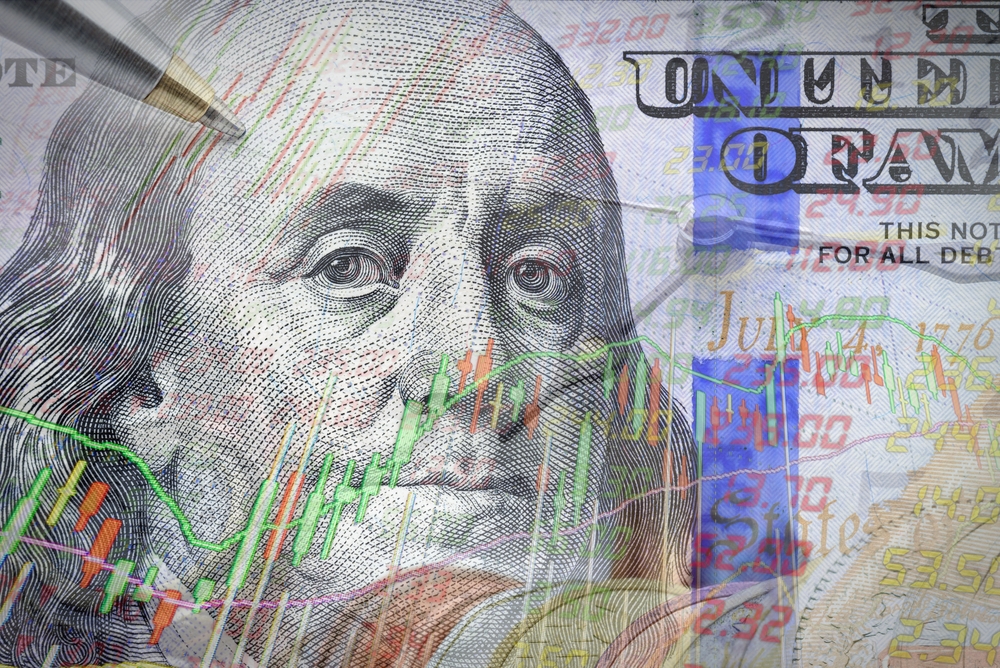
Services data sent the US dollar down yesterday.
Yesterday was the ultimate game of two halves as macro data came on to play “super sub”, shaking up what had been a listless day of marginal moves.
Markets had still been blowing away the cobwebs collected over the Easter holidays. Volumes were light on Wednesday morning, which helped major currency pairs trade across a pretty tight range for much of the day, despite the usual trickle of data.
That all changed with the release of US services figures yesterday afternoon. US ISM Services PMI fell to 51.4 in March from 52.6 in February, underscoring expectations of a small improvement in the data. New orders fell off significantly and employment contracted, adding up to the study’s worst read for three months.
That caused an instant US dollar selloff. GBP/USD advanced by almost half a cent on the news, while EUR/USD gained a similar amount within an hour of the data hitting screens.
Earlier, eurozone inflation fell to its joint lowest level in almost two and a half years in March’s preliminary report. The 2.4% figure matches the low from last November and marks a reassuring return to deceleration for Europe’s price rises, which had been on the rise heading into 2024.
Unemployment in the eurozone meanwhile came in at 6.5% in February. That was unchanged from January’s figures but slightly above forecasts of 6.4%.
In a speech at Stanford University last night, Federal Reserve chair Jerome Powell said that the central bank will need more time to evaluate the current state of inflation before cutting interest rates.
The Japanese yen continues to languish around its lowest in decades against the US dollar. The yen’s tough times have been caused in large part by the Bank of Japan, which shocked markets by acting incredibly uncertain about future interest rate increases. This is another reminder of just how quickly markets can change. After all, it was just a few short months ago that the yen seemed set for a blockbuster 2024.
The Royal Mail warned it would have to limit second-class post and bulk deliveries in a cost-cutting drive to stay afloat. If you sent any chocolate via post over the past week, you might want to bear this in mind to avoid any confectionary mishaps next year…
Make sure any upcoming transactions are protected against the risks of sudden market movements. Secure a fixed exchange rate now with a forward contract; call your account manager on 020 3918 7255 to get started.
GBP: Riding on coattails
Sterling had a much improved day against the US dollar, on Wednesday, climbing to its highest level since before Easter. However, the pound traded sideways against the euro and its success against the dollar was caused by unexpectedly low services data. The UK economy will need to pitch in for sterling to find more prolonged strength.
GBP/USD: the past year
EUR: Inflation backs off
The eurozone had started to feel a little bit antsy about resurgent inflation. After climbing the past few months, news that both headline and core CPI fell in March will be good news for policymakers, who had been clogging up the airwaves with warnings about renewed price pressures.
GBP/EUR: the past year
USD: Private sector booms
The US private sector gained the highest number of jobs since July in March, signalling a booming labour landscape. 184,000 jobs were added in all, but most worrying of all for the Fed may be the fact that wage growth for job-changers rose from 7.6% in February to 10% in March.
EUR/USD: the past year
For more on currencies and currency risk management strategies, please get in touch with your Smart Currency Business account manager on 020 7898 0500 or your Private Client Account Manager on 020 7898 0541.

 020 7898 0500
020 7898 0500
